B1,B2andB3 are three identical bulbs connected as shown in (fig. 3.46). When all the three bulbs glow, a current of 3A is recorded by the ammeter A.
(i) What happens to the glow of the other two bulbs when the bulb B1 gets fused ?
(ii) What happens to the readings of A1,A2,A3andA when the bulb B2 gets fused ?
(iii) How much power is dissipated in the circuit when all the three bulbs glow together ?
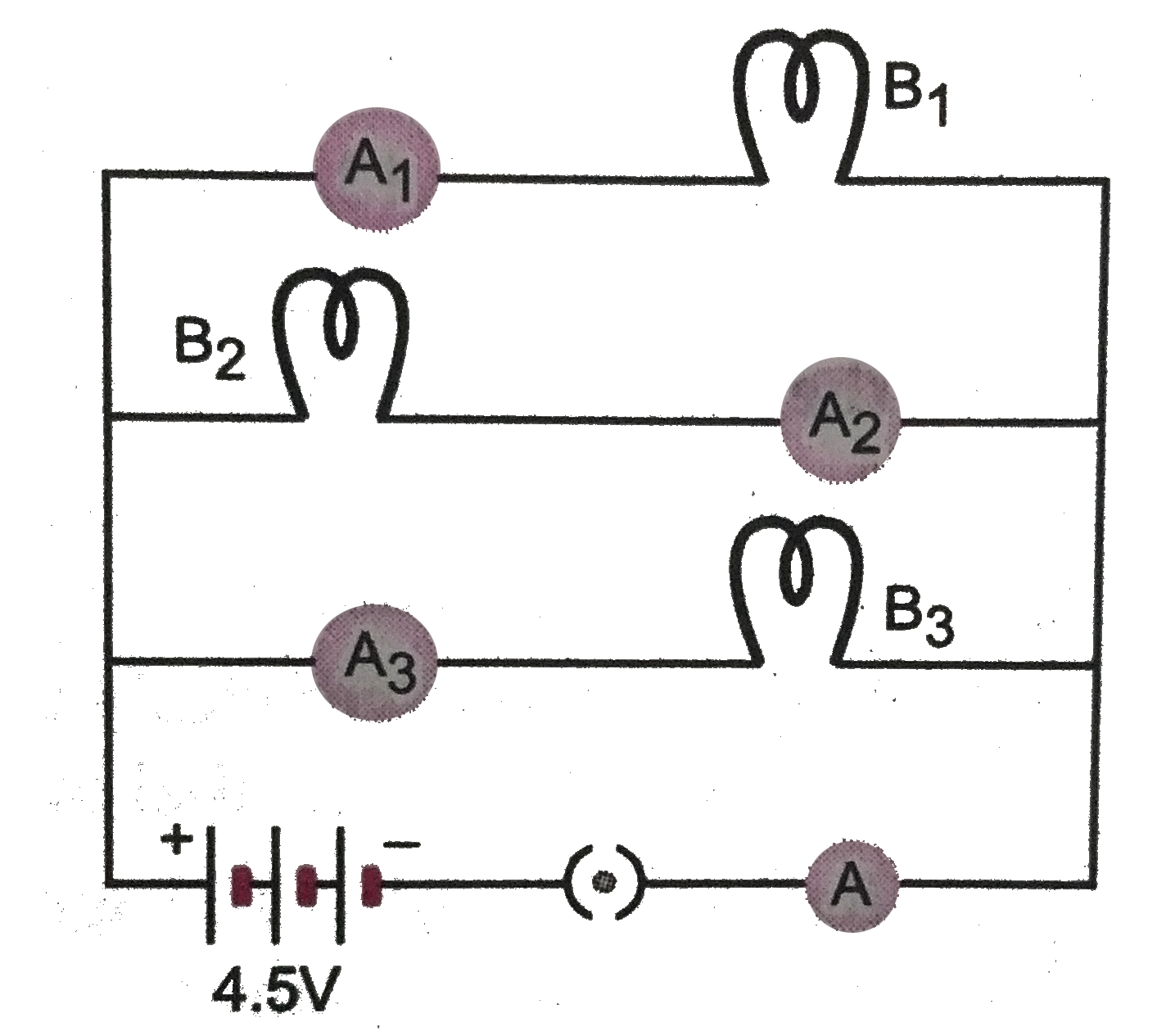 .
.
Resistance of combination of three bulbs in parallel
Req=VI=4.53=1.5Ω
If R is the resistance of each wire, then
1Req=1R+1R+1R or 1Req=3R
or R=3Req=3×1.5=4.5Ω
Current in each bulb, I=VR=4.5Ω4.5Ω=1A
(i) When bulb B1 gets fused, the currents in B2 and B3 remains some I2=I3=1A, because voltage across the B2 and B3 bulb remains same, so their glow remains unaffected.
(ii) When bulb B2 gets fused, the current in B2 becomes zero and current in B1 and B3 remains 1A. Because voltage across B1 and B3 bulb remaining same
Total current I=I1+I2+I3=1+0+1=2A
Current in ammeter, A2=0
Current in ammeter, A3=1A
Current in ammeter, A1=1A
Current in ammeter, A=2A
(ii) When all the three bulbs are connected .
Power dissipitated, P=V2Req=(4.5)21.5=13.5W
Topper's Solved these Questions
Similar Questions
Three identical bulb are connected as shown in figure . When switch S is closed, the power consumed in bulb B is P . What will be the power consumed by the same bulb when switch S is opened ?
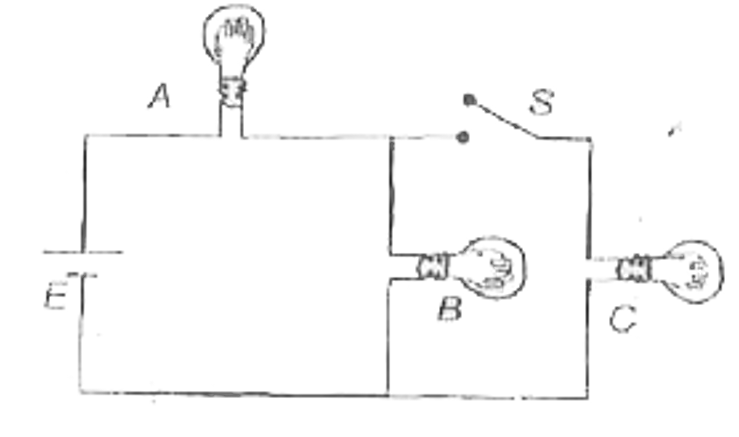
View SolutionAll bulbs in the circuit shown in figure are identical. Which bulb glows most brightly?
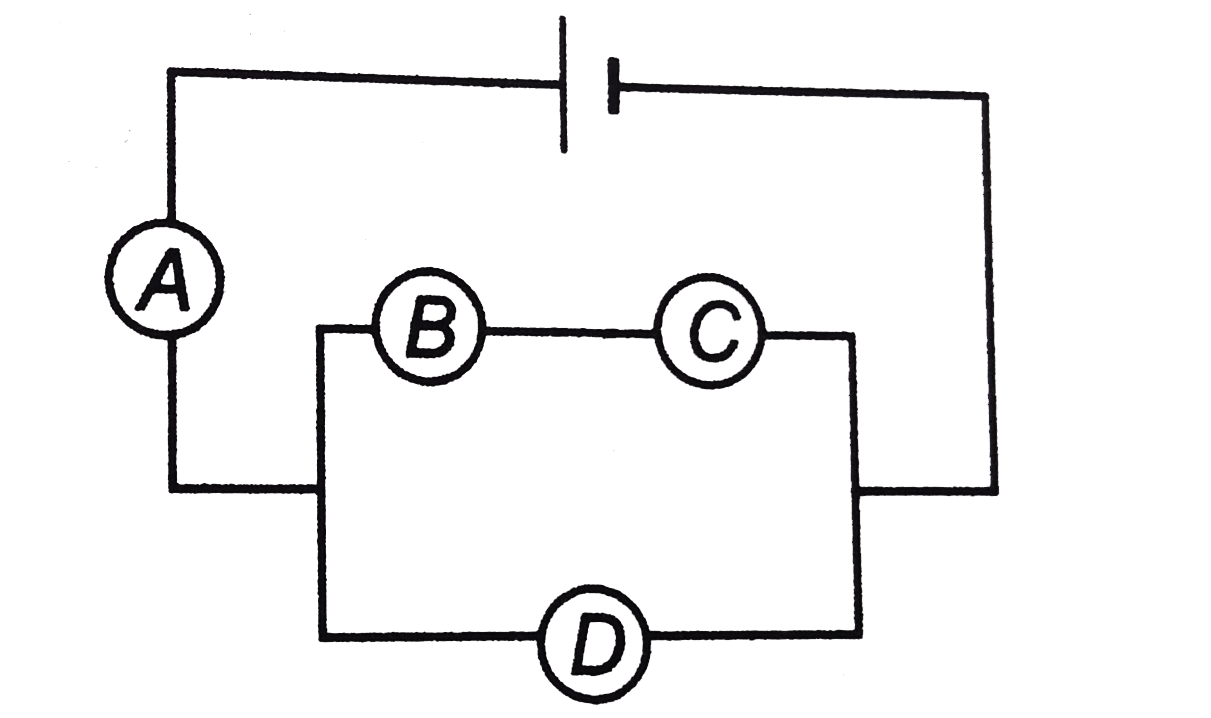
View SolutionB1,B2andB3 are the three identical bulbs connected to a battery of steady emf with key K closed. What happens to the brightness of the bulbs B1 and B2 when the key is opened?

View SolutionTwo bulbs A and B are connected as shown . When switch 'S' is closed then which of them will fuse?
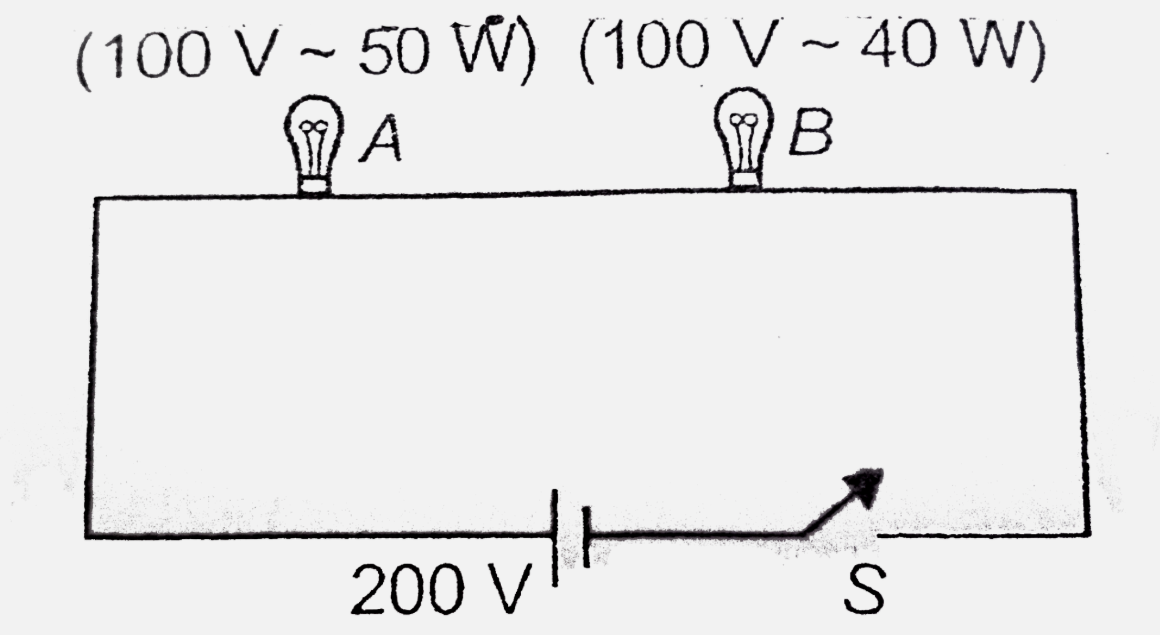
View SolutionA torch bulb rated 4.5W,1.5V is connected as shown in Fig. 7.35. The emf of the cell needed to make the bulb glow at full intensity is
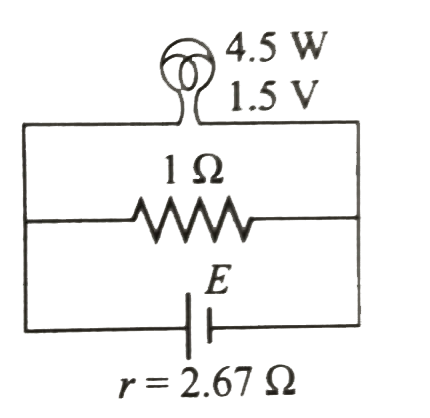
View SolutionFig. shows three bulbs A, B and C each of rating 100 W, 220 V connected to the mains of 220 V. Answer the following: (

How is the glow of bulbs B and C affected if bulb A gets fused ?
View SolutionFig. shows three bulbs A, B and C each of rating 100 W, 220 V connected to the mains of 220 V. Answer the following: (

How is the glow of bulbs A and C affected if bulb B gets fused ?
View SolutionTwo bulbs, when connected in series, are brighter than a single bulb.
View SolutionA, B, C are identical bulbs. How does the brightness of A and B change when the switch S is closed ?

View SolutionThree identical bulbs are connected in parallel across an ideal sources of emf E .The ammeter A and voltmeter V are ideal . If bulb B3 gets fused, then
_PHY_E05_094_Q01.png)
View Solution
